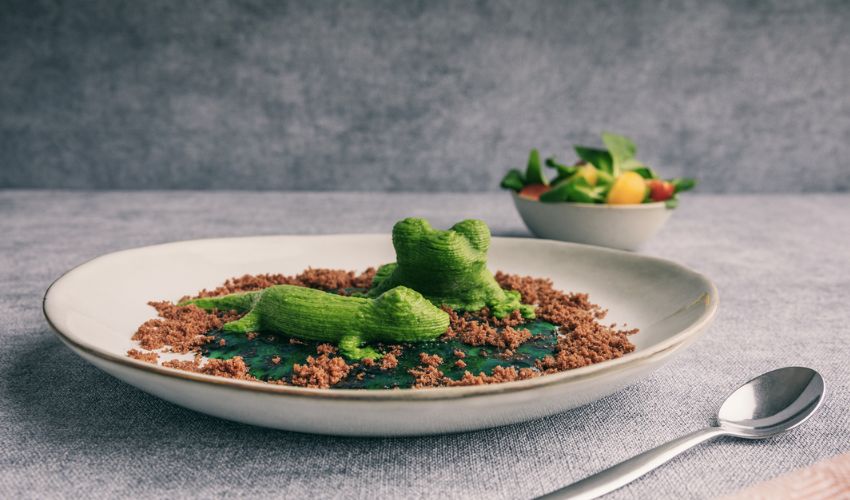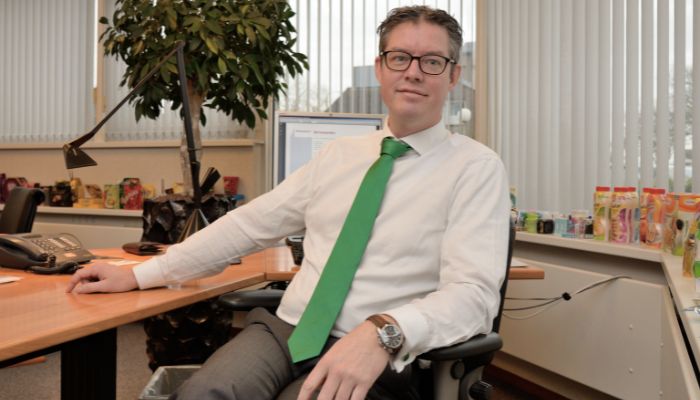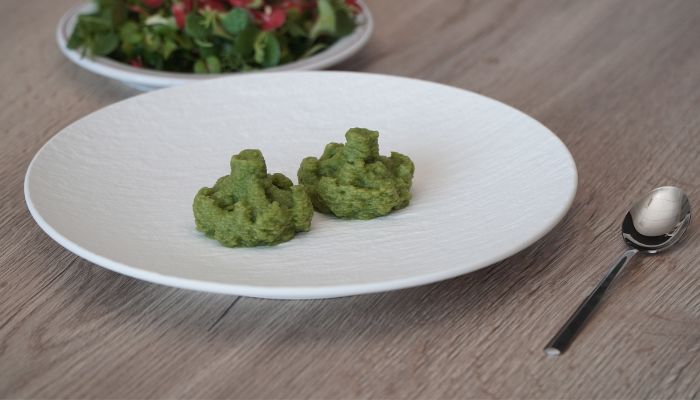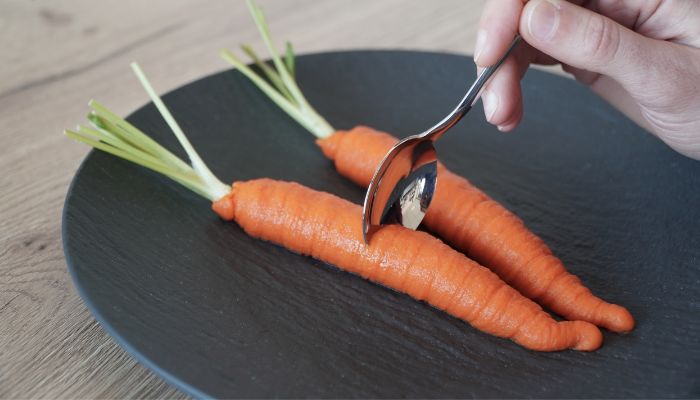
Food is an essential part of life for most people, and the globalization of trade has made it possible to sample cuisines from around world. The rich variety of food is not available to everyone. What happens when eating becomes difficult? Dysphagia is a medical term that describes difficulty swallowing. Meal times can be challenging for patients and it’s important to find alternatives to make eating easier. Gastronology – a Dutch company started in 2019 by Peter Nieuwkerk – is working on a solution. Gastronology develops 3D food for patients that is tasty and visually pleasing, with the aim of making meals more enjoyable by replacing bland, blended products currently available on the market. Peter Niewkerk, the CEO of the company, told us more about its projects.
Would you please introduce yourself to us and tell us a little more about gastronology?
Peter Nieuwkerk founded Gastronology 3D Food Works, a company that produces 3D food products. Gastronology 3D Food Works produces and develops food products that are based on 3D printing. The company is built on three pillars: the development of recipes, 3D modeling and industrial food printing. All recipes are developed by Masterchef Eugène Swalen. I have a long and reputable state of work with the Budelpack Group, an innovative company focusing on the co-packing of food products for multinationals like Mars-Wrigley, Nestlé, Unilever, KraftHeinz as well as many local jewel companies.

Peter Nieuwkerk, CEO of Gastronology
Gastronology’s products are 3D printed food products, which are being sold frozen and packed. Our production process is as follows: In December 2022, construction started of a special ‘3D food print’ production site in Poortvliet (the Netherlands). The production process consists of a five-step process: processing (purée production), 3D food printing on an industrial scale in a conditioned room of a maximum of 6 degrees Celsius, a shock-freeze process, packaging in a similarly conditioned room and deep-freeze storage (-20 degrees Celsius). In all of these steps, food safety is paramount. This is why all of the equipment will be equipped with an ultra-modern Clean-In Place (CIP) system. The production site will be opened in the coming weeks.
3DN: Which technology do you use? Why did you choose to use 3D Printing for your business?
Gastronology is the only company that uses 3D food printers. Food Lab uses desktop 3D printers, while industrial production utilizes a 3D printer that can print up to 43 kg per minute. The scale-up phase will see this increase to 130kg per hour.
We started this company to apply the 3D printing technique to solve a problem that has been around for a while: dysphagia sufferers who must eat pureed food. Dysphagia patients suffer from a chewing and swallowing disorder, which is why they need to eat puréed food. The food they eat is pureed, making it unrecognizable, untasty or unappealing. Not only is there a lack of food intake, but also a refusal to eat as well as a feeling of not being able to participate in the social experience of dining together. The technique of 3D food printing enables us to present food in their original shape, made from fresh purée, with their natural smell and shaped (printed) in their original shape. The result is that 3D-printed broccoli tastes and smells just like broccoli. It can also be eaten by dysphagia sufferers with a spoon. A true problem-solver.

The next episode can be formed by offering nicely 3D shaped vegetables – carrot, broccoli, green beans, cauliflower, peas, beetroot and sweet potato – for children which can make this food irresistible by creating extremely appealing and attractive shapes as well as tastes. Gastronology’s technique to print on an industrial scale opens up these market opportunities.
Gastronology: Are there any special projects that you are currently working on at 3DN?
The current focus is to prepare a product line for dysphagia, starting with potatoes and veggies, totaling 8 products. Before summer 2023, the first industrial production is expected to begin with a daily production capacity of about 700KG. In the future, we plan to expand our product range by adding fish and meat products. Our target group will be extended by creating products for children aged 3-12 years. The goal is to offer customized nutrition that can help oncology patients overcome the taste and smell disturbances caused by cancer treatments like chemotherapy.
What do you think of the future of Gastronology in 3DN?
We have planned to go live just before summer 2023 by introducing the first range of 8 products being produced on the unique technology of Gastronology. In the first stage, selected care houses and hospital will offer these products as a pilot to their dysphagia patients for a 6 month period. This will allow them to test and evaluate. We will then move on to the commercial launch phase after this pilot stage.

What last words would you like to say to our readers?
Gastronology plans to make its 3D printing technology and 3D recipes for 3D foods available via licensing in the future. This will be made possible by external manufacturers and brand owner. In case a brand owner has its own great vegetable brand, but wants to add a range of 3D food products, it can hire a contract-manufacturer who is contracted by Gastronology and who can produce on behalf of this brand owner. Gastronology also offers to license their recipes and techniques directly to brand owners who want to manufacture themselves. Find out more HERE.
What do you think of Gastronology’s 3D printed food? Let us know in a comment below or on our LinkedIn, Facebook, and Twitter pages! Don’t forget to sign up for our free weekly Newsletter here, the latest 3D printing news straight to your inbox! You can also find all our videos on our YouTube channel.
*All photos credit: Gastonology




